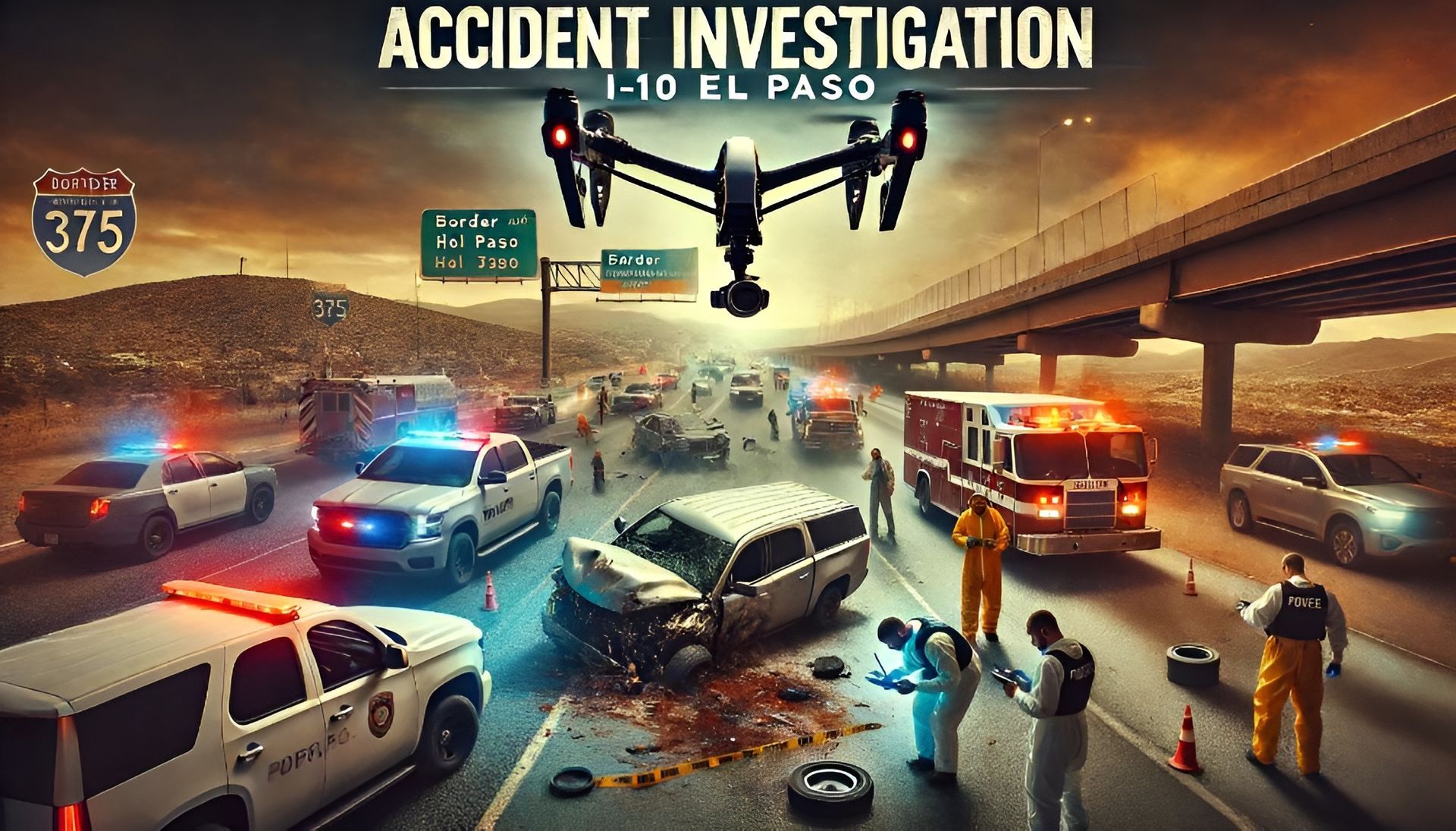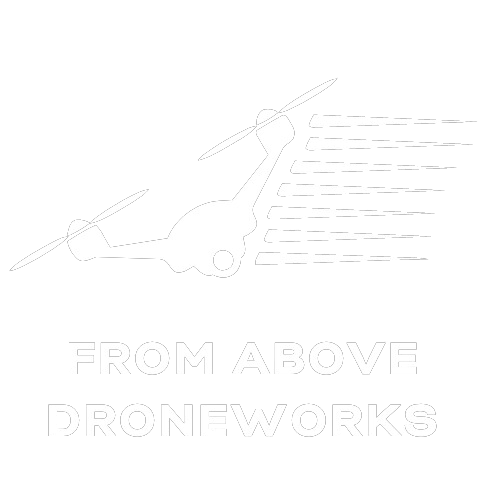Drone Investigations: Benefits for Crime Scenes and Accident Reconstruction
Unpacking Drone Investigations: Game-Changers in Crime Scene and Accident Analysis

Picture this: You’re at a crime scene or an accident site, and every second counts. Time is either your best friend or your worst enemy. That’s where drone investigations fly in to save the day! They’re totally shifting the game, providing that eagle-eye view in ways we never thought possible before. With drones, law enforcement and forensic experts are capturing super-clear aerial snapshots of scenes, which lets them peel back layers without messing with evidence. Think of drones as the ultimate scene detectives, snapping 3D models like pros. And for traffic accidents, imagine being able to pinpoint every tire skid and speck of debris like never before—all thanks to our high-flying helpers in the sky. So, let's dive into the whys and hows of droning the forensic science world, and I’ll let you in on how explosive these benefits truly are.
Why Drones Are a Huge Win for Investigations
Speed and Precision? Yes, Please!
Remember the old days of piecing together a crime scene? Man, it was a marathon of measuring tapes and sketch pads, taking forever and a day. But drones? They’re our ultra-efficient sidekicks, zipping through the task list at lightning speed. Trust me, I've seen drones do in minutes what used to take us hours. This is crucial because evidence is delicate—it can get ruined or lost so easily. Drone precision is next-level, too. They catch every tiny detail, serving up a complete view that's gold for analysis later on. The stakes are high—evidence is a fragile entity, prone to destruction or disappearance (Miller, R. E., & Allgeier, S. P., "The Use of Drones in Forensic Investigation," Forensic Science Review, 2020).
Picture one particularly glacial case, where the trail had gone ice-cold—the evidence was at a premium, and the merciless clock was our adversary. Then, like a celestial guardian, our drone soared, humming its vigilant tune overhead. With aerial dexterity, it chronicled the crime scene, unveiling perspectives our earthbound stance could never offer. The result? A previously undetected piece of evidence emerged, propelling the case into an astounding breakthrough—a testament to the power of this technology cited by Waugh, L. N., & Piza, E. L. in "The Use of Aerial Drones in Investigative Operations: Considerations and Implications" (Journal of Police and Criminal Psychology, 2021). Game changer, indeed!
Crystal-Clear Evidence From Above
Now, let’s chat about the standout star of drone tech—high-res imaging. Drones strut stuff like cutting-edge cameras that show the nitty-gritty of a scene in high definition. We’re talking about spotting things as small as blood spots or sneaky footprints that might slip by us otherwise. And in accidents? It's like everything freezes in place for our cameras—vehicle damage, skid marks, the works. These clear-as-day images are a dream to work with because we can look them over countless times without missing a beat.
The Sky’s the Limit with Aerial Surveillance
Going aerial changes the perspective—literally. With drones, we cover more ground in less time. I’ve seen cases where the aerial view pointed out a pattern nobody saw from the ground. The beauty is, that we can do all this hovering without stepping on the crime scene or accident area, so we don’t mess things up. Plus, let’s not forget safety. Drones can bravely go where it might be risky or tough for us to tread. The live feed we get from drones means we can make smart calls on the spot, and that efficiency is everything.
Breaking Down Crime Scene Analysis with Drones
3D Models: Your Scene’s Digital Twin
Let’s talk about the 3D magic drones whip up. It's like having a model of the crime scene that you can twist and turn, zoom in and out, and explore from every corner. In court, these models can help everyone understand the scene with just a glance—super straightforward! Plus, they last forever in digital form, so you can revisit them any time, even after the real scene is long gone.
Collecting Evidence Without the Intrusion
Imagine being able to document a crime scene without ever stepping inside the yellow tape. That's exactly what drones let us do. We grab all the details from a safe distance, which keeps the original scene pristine. Whether it's dangerous terrain or a delicate situation, drones swoop in and get the job done safely and without any fuss. The National Institute of Standards and Technology (NIST) highlights in their "Forensic Science Research at NIST" that drone-assisted photogrammetry can map a site down to millimeter accuracy (NIST, 2021). In environments where the terrain is perilous or conditions are volatile, drones provide a strategic advantage. They deploy with speed and discretion, ensuring that the scene remains uncontaminated. It's a methodical approach that seamlessly upholds the sanctity of the evidence, paving the way for uncompromised forensic analysis.
Document Everything, Miss Nothing
With drones, ‘thorough’ is the name of the game. They give us photos and videos from all kinds of angles, leaving no stone unturned. This is why I love drone tech—it doesn’t let important stuff slip through the cracks. And sharing this info? It’s a breeze since everything’s digital. This complete record is a massive help in piecing together what went down, which makes building a strong case that much easier.
Drones: Your Ace for Accident Reconstruction
The Full Picture, Fast
Ever been stuck in traffic because of an accident? It's frustrating for everyone. Drones swoop in to save the day here, too. They capture a 360-degree snapshot of the entire scene so we can quickly figure out what happened and clear the road faster. Plus, with all that data, we can create 3D models and detailed maps that are spot-on, helping us get to the bottom of the accident and figure out who's responsible.
Figuring Out Who’s to Blame with Help from Above
Determining who's at fault in an accident can be tricky, but UAVs simplify the puzzle. They capture every detail, which is pure gold for reconstructing the event and pinpointing the culprit. I've seen drones turn chaos into clarity, giving us the real story in high-definition evidence.
Drone Pilots: The Unsung Heroes
Let’s give a round of applause for the pilots behind the controls—these FAA-certified pros know their stuff. They make sure our flying detectives operate under the radar (pun intended) and on the up and up. They manage to gather all this crucial data without stirring the pot or putting anyone at risk. Their expertise brings an added layer of trust to the investigation’s outcome.
So, as we zip up this chat on drones shaking up the forensic field, it's clear they’re blazing a new trail. From catching the finer points of a scene to providing court-ready 3D models, drones are our silent partners that deliver big on the promise of bringing truth to light. Next time you see one buzzing overhead at a crime or accident scene, know it’s doing some serious detective work up there.
Conclusion
As we draw the curtain on our discussion about drones revolutionizing forensic exploration, it's palpable that they're carving out an unprecedented path. Capturing minute details of various scenes, crafting courtroom-grade 3D replicas, these stealthy compatriots punch way above their weight, firmly committed to the quest for justice. The next time a drone hums its way through the skies at a scene of mystery or mishap, bear in mind that there's some heavyweight detective work happening right above. Their silent blades are wings of truth, each rotation cutting closer to the core of the case.

